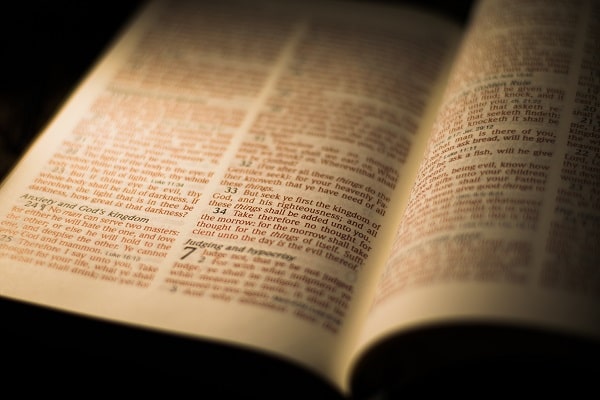by Linea Lorenzo
A good-quality reading light can really play a big part in helping you enjoy your reading experience. One of the keys to this though lies in selecting a light source with the best color temperature.
Don’t worry, if you’ve never heard of that term before, we’ll explain exactly what it means, why it’s important, and what types of light source provide the best color temperature that can be used for reading.
Contents

By definition, color temperature is “[the] ideal black body radiator that radiates light of comparable hue to that light source.” To put that simply, first of all, color temperature is measured in Kelvins. Just bear that in mind, and then picture a black rectangle in your head.

Are you still picturing the black rectangle? Good, as this will make sense. We promise!
So, the black rectangle is at room temperature, and the temperature is assumed to be at 0 degrees Kelvin. If you heat it to 1500 degrees Kelvin, it glows bright red. Heat it further, and at about 2700 Kelvins, it will glow and have a warm yellow color.
The higher it is heated (again, in Kelvins) the brighter it gets until it reaches around 5000 to 6000 Kelvins and turns white. It can carry on after that and turn blue, but that is a different story for another day.
That is the color temperature. It means that a light with a rating of around 2900 Kelvins would be described as “warm white,” while when you get a bulb with 3500 to 4000 Kelvins, you are going to get a light called “cool white.”
Finally, when you’re getting to around 5000 Kelvins, this is what is referred to as “daylight.” This means it is a pretty intense, white based light but it also has some blue tones running through it.
As any reader will tell you, there are two situations where reading can become a chore instead of a pleasure. In fact, it comes to a point when you have to stop reading completely.
Those times are when it is too bright, such as when you read outside at the height of summer and the bright sunshine is blazing down onto the page. The other time is in overall low light conditions, such as dusk or nighttime, when it can be a struggle to even just see the words on the page. Compare that to the explanation of color temperature above, and that should give you some idea of how this relates to the best color temperature for reading.
When a light source has a reading of 0 degrees Kelvin, it is in its original state and with our example above, that means it is a black rectangle. In other words, it is giving off no light at all, which of course makes it an inferior light source for reading.
At the other end of the scale though, we have “heated” the black rectangle to 5000 degrees Kelvin (or even more!), and it is now throwing out light with a color temperature of “daylight.”
If that is an artificial light source, then all it would be doing would be mirroring the two worst reading conditions, and why would you pay for a reading lamp that does that?
We’ve looked at what color temperature means, and we’ve correlated it with two naturally occurring situations namely too much light and too little, which both make reading uncomfortable. The next question then is to ask what temperature is right for reading and the answer is clearly what is known as a Goldilocks scenario.
What we mean by the Goldilocks scenario is that if two extremes are unacceptable conditions but for opposite reasons, then the most likely place to find optimal conditions is right about in the middle. In other words, not too bright and not too dull but “just right.” That means a color temperature ranging about 2500 degrees Kelvin to 3500 degrees Kelvin should be just right for reading.
This color temperature range is going to span from warm white to bright white, and which light is going to be the best for you specifically is, frankly, going to change a little depending on a variety of factors.
The ambient daylight levels or lack of it, the shade of the color of the book pages, and whether they are mildly reflective or have a very matt style finish will all affect what kind of light is best for you in any situation.
Hence, since the best color temperature for reading is actually a range of temperatures rather than a single set standard, it does make sense to choose something like a LED reading lamp. This will have the capacity to adjust the color temperature it produces to match the requirements, as they exist in the conditions you find yourself in at that time, ensuring that you can always have the color temperature suitable for reading.
We hope that we have provided you with the information needed to understand color temperature to help you decide what would best work for your situation. As we’ve recommended, go for the best LED lights and use accordingly.
 |
 |
 |
 |

About Linea Lorenzo
Linea was born to love drawing and just a few tech gadgets. While not working or sleeping, he often spends hours to look through the coolest, latest gadgets at different shopping sites, drooling about them. He also likes to keep things clean and tidy - now that the reason you see so many cleaning devices and electronics reviews at linea.io. Ah yes, he made the site also just for that. Occationally, he invited friends to share their expertise around here too. Linea received Bachelor of Arts in Arts & Letters at Sacramento State University.
 |
 |
 |
 |
You can Get FREE Gifts. Furthermore, Free Items here. Disable Ad Blocker to receive them all.
Once done, hit anything below
 |
 |
 |
 |